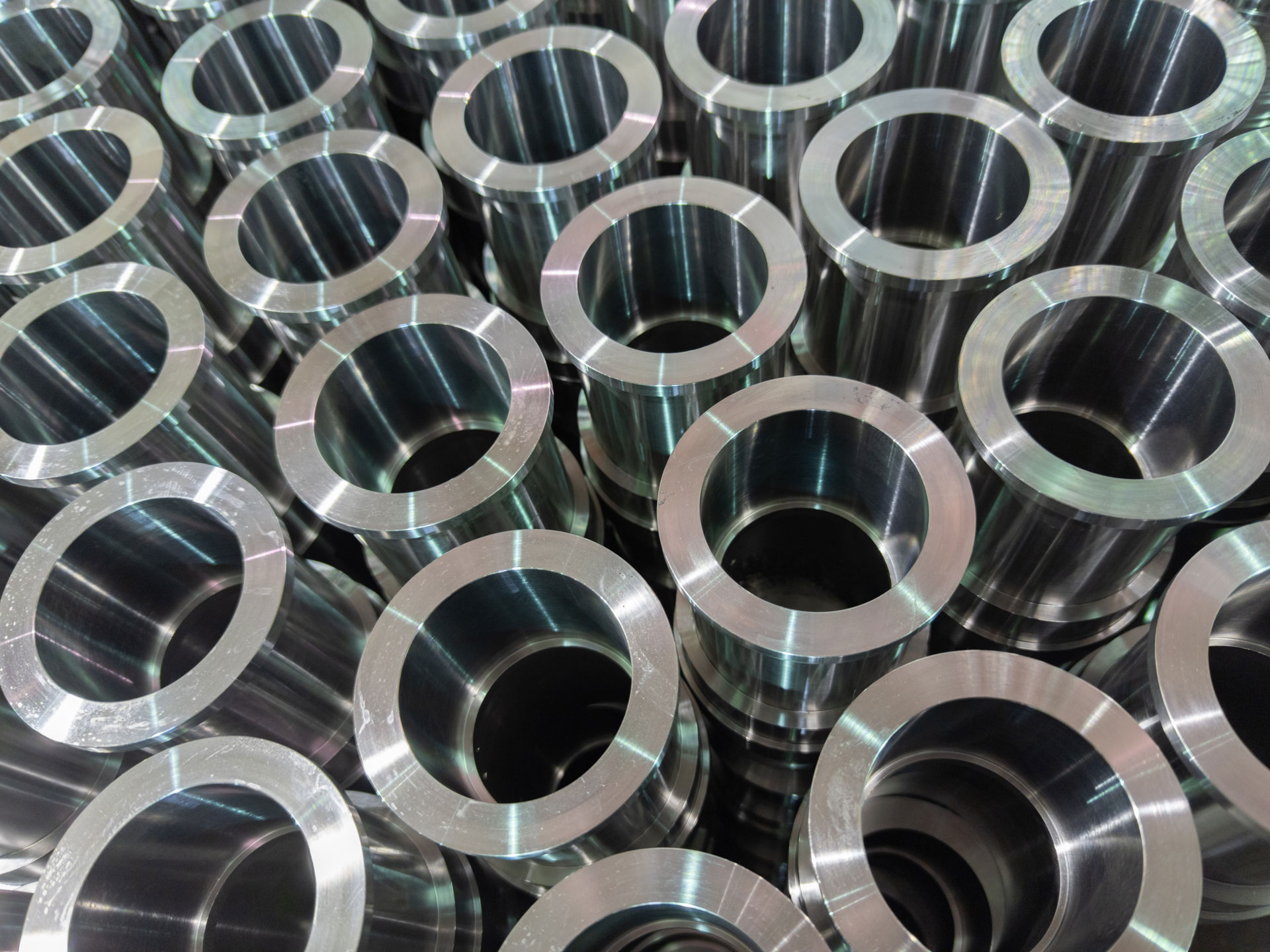NICKLON™

INCREASE PRODUCTION AND RELEASE QUALITY WITH NICKLON™ COATINGS
NICKLON™ is a proprietary electroless nickel with polytetrafluoroethylene (PTFE). This nickel PTFE coating that offers corrosion and oxidation protection equal to Electroless Nickel, plus excellent lubricity and wear resistance. NICKLON™ coating from Bales has an excellent release rating and low coefficient of friction.
Boasting a 45 Rockwell Hardness, NICKLON™ stands out for its balance of flexibility and strength. This level of hardness is meticulously tailored to provide optimal protection without compromising the integrity of the coated component.
NICKLON™ COATING BENEFITS
NICKLON™ coating can provide additional benefits for a vast array of industrial applications. In addition to the above, using NICKLON™ coatings as your next surface solution provides several additional benefits.
Our NICKLON™ coating is engineered for excellence, offering a superior release rating and a minimal coefficient of friction. This unique combination results in smoother operation and extended component life, setting a new standard in surface coatings.
- Application of 0.0005”.
- Low coefficient of friction.
- Excellent lubristic characteristics.
- Enhances resin flow by 4-8%.
- Autocatalytic application ensures a uniform deposit in complex details.
- Mimics the finish of the base material.

LOW-FRICTION COATINGS
Do you have parts prone to getting rubbed the wrong way? Solve your abrasion and wear problems with our abrasion-resistant coatings.
ABRASION-RESISTANT COATINGS
Are release issues causing downtime in your shop? Reduce friction and achieve uniform treatment with our lubricity and release/low-friction coatings.
NICKLON™ COATING FAQS
NICKLON™ coatings combine the durability of NICKLON™ with the exceptional lubricity of PTFE. Learn how NICKLON™ stands out from other coatings and provides lasting surface protection in applications ranging from fasteners to automotive and plastic injection molding.
What is NICKLON™ Coating?
Electroless Nickel PTFE coating, also known as NICKLON™, is a unique plating process that combines the robustness of nickel with the lubricity of PTFE. This dual-layer coating offers exceptional corrosion resistance, reduced friction, and improved wear resistance. It's ideal for parts that require enhanced performance in challenging environments, providing a durable solution that enhances the longevity and efficiency of coated components.
NICKLON™ VS NIBORE™
While both NICKLON™ and NIBORE™ coatings offer improved surface properties, they serve different purposes. NICKLON™ is renowned for its low friction and non-stick properties, making it suitable for applications where lubricity is crucial. On the other hand, NIBORE™ is known for its hardness and wear resistance, making it a better choice for high-wear environments. Choosing between the two depends on the specific needs of the application, such as the requirement for lubrication or durability.
NICKLON™ VS Hard Chrome
NICKLON™ and Hard Chrome are both used to enhance the surface characteristics of metal parts, but they have distinct advantages. NICKLON™ provides superior lubricity and corrosion resistance, making it ideal for parts that need to reduce friction and operate smoothly in corrosive environments. Hard Chrome, however, offers excellent hardness and wear resistance, suited for components exposed to high stress and wear. NICKLON™'s advantage lies in its ability to offer both protective and functional benefits, such as reduced wear and improved part lifespan.

45
ROCKWELL HARDNESS

0.10
COEFFICIENT OF FRICTION

9-11%
Phosphorus

PTFE 9-11%
Composition (wt)

6.5 to 7.5 g/cm3
Density

0.5 mil - 650 hours,
1.0 mil - 1,000 hours
Corrosion Resistance
corrosion resistance rating
RELEASE RATING
ABRASION resistance rating
CASE STUDY: Plating Solution For Expansion Wear
The corrosion in the “Before” image is the result of steam and water from the EPS foam molding process. In a typical molding cycle, steam is initially used to expand the foam, followed by cooling water to stop the expansion. Each of these cycles can range from 30 seconds to 2-3 minutes, and it's not uncommon for a mold to undergo 100,000 cycles or more annually, depending on production demand. The specific cavities in this project have likely endured approximately 250,000 cycles since they were last coated. The “After” image is the final result of our 6-Point Bales Plating Process.
Thanks to Bales’ Nibore™ coating and precision polishing, this molder now gets:
- Better mold performance
- Faster cycle times
- Longer-lasting molds

